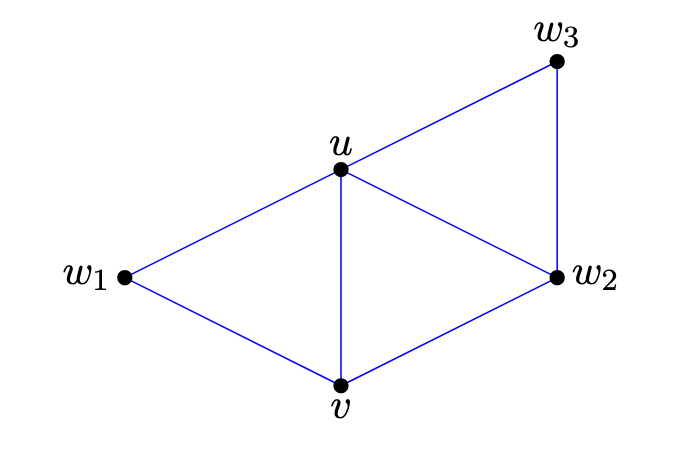문제출처 - 광주과학기술원(GIST) 최정옥 교수님의 “그래프 이론” 수업, 2024년 가을학기 중 Homework 2
Solution
(i). Since u and v are adjacent, uv is an edge in G.
(ii). The number of triangles containing uv is the same as the size of the intersection of N(u) and N(v). N means neighbor.
(iii). For example, if N(u)={v,w1,w2,w3} and N(v)={u,w1,w2}, then:
N(u)∩N(v)={w1,w2}.
Thus, the triangles containing edge uv are u−v−w1−u and u−w2−v−u.
This is the same as the size of N(u)∩N(v), which is 2.

(iv). The union of neighbors can be expressed as:
|N(u)∪N(v)|=|N(u)|+|N(v)|−|N(u)∩N(v)|.
(v). |N(u)|=d(u) and |N(v)|=d(v) because G is a simple graph.
(vi).
|N(u)∪N(v)|≤n(G),
as all vertices in the graph could potentially be in N(u)∪N(v).
(vii). Therefore:
n(G)≥d(u)+d(v)−|N(u)∩N(v)|.
(viii). As mentioned in (ii), the number of triangles containing uv is the same as the size of N(u)∩N(v).
Thus, uv belongs to at least:
d(u)+d(v)−n(G)
triangles.
